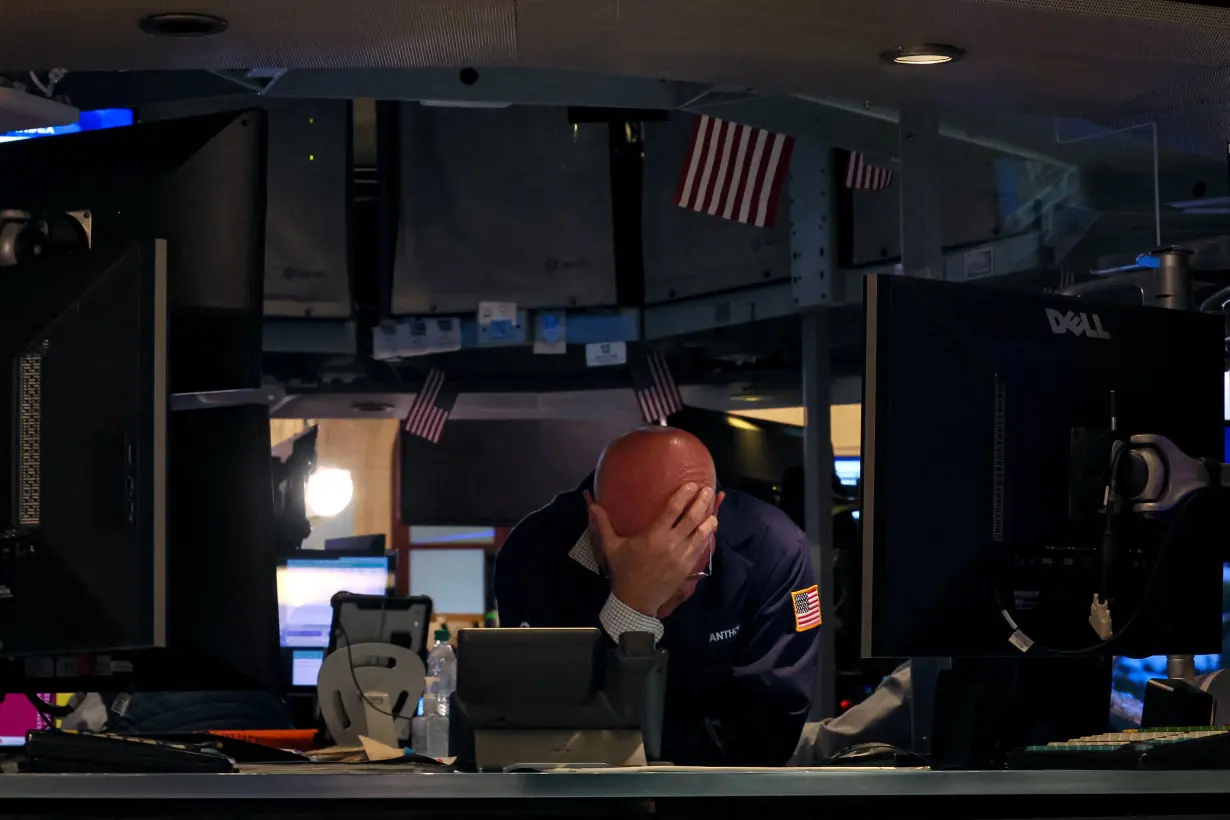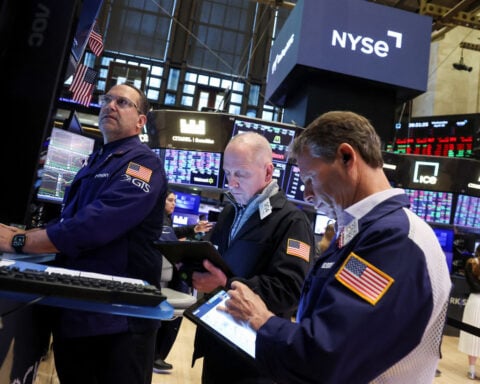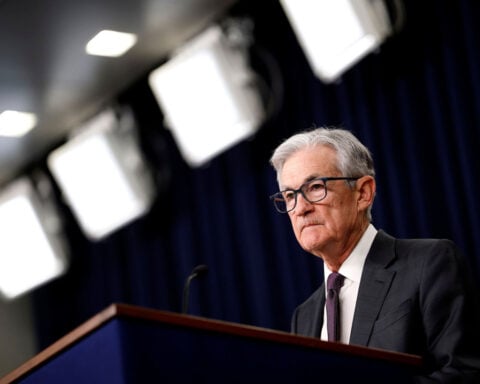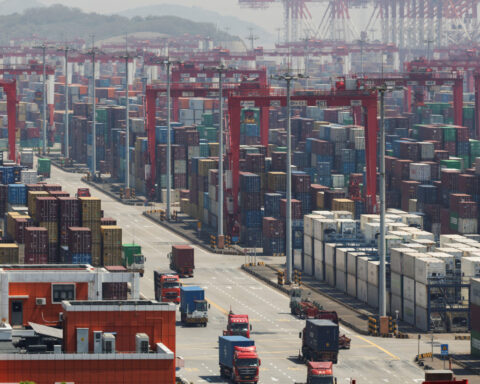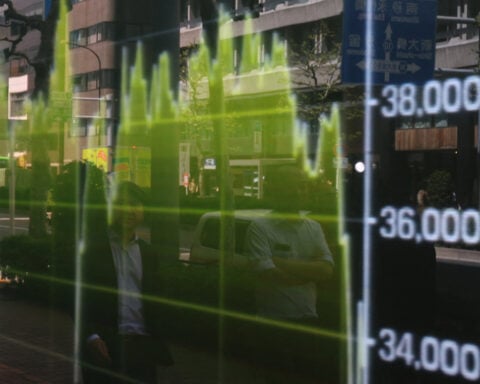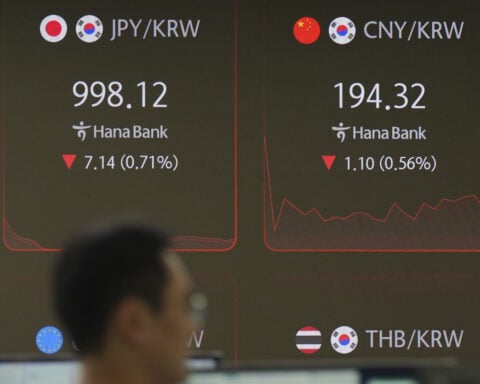By Ann Saphir and Dan Burns
(Reuters) - An unexpectedly weak U.S. employment report, featuring a post-pandemic high in the jobless rate, has rekindled worries a recession may be in the offing that would dash the Federal Reserve's hoped-for soft landing for the economy.
With stock markets reeling on the premise the Fed has now kept interest rates too high for too long, a Goldilocks outcome narrative that had persisted for months has suddenly been overrun by angry bears.
So just what is the state of play in the U.S. economy? It is rare that any one data point captures all that is at play, but here is a look at a clutch of indicators - some still favorable to ongoing growth and no recession, others perhaps not.
GROWTH AND DEMAND
Most recessions occur because overall economic output, also known as gross domestic product, falls notably. That has not happened and does not look like it will imminently.
Growth in the second quarter came in at 2.8% on an annualized basis, double the rate of the first quarter, exactly the average of the last six quarters, and on par with the average growth rate over the three years before the pandemic.
While the mix of growth is changing, one measure that Fed Chair Jerome Powell tracks as a gauge of underlying private-sector demand - final sales to private domestic purchasers - held at 2.6% in the second quarter. Again that is right on its average of the last year and a half and matches the run rate up to the pandemic.
SERVICES SECTOR STRENGTH
The Institute for Supply Management's closely watched services activity index climbed back into expansion territory and measures of new orders and employment both rebounded.
A rival measure of services activity, accounting for two-thirds of U.S. economic activity, from S&P Global held near the highest in more than two years in July.
“The July ... surveys are indicative of the economy continuing to grow at the start of the third quarter at a rate comparable to GDP rising at a solid annualized 2.2% pace," according to Chris Williamson, chief business economist at S&P Global Market Intelligence.
INFLATION COOLING
The reason interest rates remain so high is that inflation surged in 2021 and 2022 and has been slower to fall than it was to rise. The year began with an unexpected upturn in inflation that gave the Fed pause about pivoting to rate cuts.
More recent data, though, show it coming closer to the Fed's targeted 2% level, which should allow rate cuts to begin soon. The question many investors have is did the Fed wait too long to shift its focus from inflation to jobs.
JOB MARKET SIGNALS RECESSION?
U.S. employers have slowed hiring, adding an average of about 170,000 jobs each month for the last three months, and just 114,000 in July, versus 267,000 a month in the first quarter of 2024, and 251,000 last year.
Meanwhile the unemployment rate rose in July for a fourth straight month, to 4.3%, nearly a full percentage-point above its January 2023 low and the highest since October 2021.
Once the unemployment rate heads upward with that kind of momentum, it does not typically stabilize until the Fed cuts interest rates.
The historical relationship between a rise in the unemployment rate and an economic downturn is captured by the so-called Sahm rule that says a recession is underway when the three-month moving average of the unemployment rate rises half a percentage point above its low from the previous 12 months.
To date, the rule has never been wrong.
Claudia Sahm, the economist who defined the rule that bears her name, told Bloomberg TV on Monday she believes the economy is probably not currently in a recession, but "we are getting uncomfortably close."
DELINQUENCIES ON THE RISE
The U.S. household debt delinquency rate rose to 3.2% in the first quarter versus 3.1% in the final three months of last year, according to the New York Fed. That is well below the 4.7% seen at the end of 2019, just before the COVID-19 pandemic.
But New York Fed researchers also found among credit-card borrowers who have reached their borrowing limits - this group tends to be disproportionately younger and lower-income - delinquency rates have risen dramatically.
Analysts say strains felt by low-income households can ripple through the economy. The New York Fed releases second-quarter data on Tuesday.
DOWNSIDE SURPRISES
Incoming reports on the economy have tended to fall short of economists' forecasts in the last several months, with Friday's weak employment data only the latest example.
Citigroup's "Surprise Index" has only been around for about two decades, so it does not have an established track record for being predictive of recessions, but it can say a lot about the change in investors' faith in the Fed being able to deliver the soft landing for the economy.
The index is near a two-year low.
WHAT CAN BE DONE?
The 2020 pandemic recession triggered an all-out response from fiscal and monetary authorities, with the Fed slashing interest rates to zero and buying trillions of dollars in bonds to ease financial conditions, and Congress and two successive presidential administrations pushing through trillions of dollars of spending to bolster consumers and businesses.
This time around would likely look quite different, and not just because the recession, if that is what this turns out to be, looks far smaller than the massive hole blown in the U.S. and world economy by the COVID-19 shutdowns.
The Fed's policy rate is currently in the 5.25%-5.5% range, giving it much more room to cut borrowing costs than it had in March 2020, when the benchmark rate was in the 1.50%-1.75% range.
And on the fiscal side, high U.S. government debt levels could prevent a robust stimulative response from the current or next presidential administration.
(Reporting By Dan Burns and Ann Saphir, Editing by Chris Reese)

 Trump has begun another trade war. Here's a timeline of how we got here
Trump has begun another trade war. Here's a timeline of how we got here
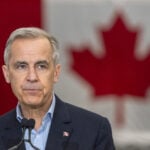 Canada's leader laments lost friendship with US in town that sheltered stranded Americans after 9/11
Canada's leader laments lost friendship with US in town that sheltered stranded Americans after 9/11
 Chinese EV giant BYD's fourth-quarter profit leaps 73%
Chinese EV giant BYD's fourth-quarter profit leaps 73%
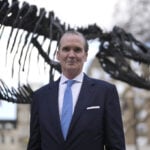 You're an American in another land? Prepare to talk about the why and how of Trump 2.0
You're an American in another land? Prepare to talk about the why and how of Trump 2.0
 Chalk talk: Star power, top teams and No. 5 seeds headline the women's March Madness Sweet 16
Chalk talk: Star power, top teams and No. 5 seeds headline the women's March Madness Sweet 16
 Purdue returns to Sweet 16 with 76-62 win over McNeese in March Madness
Purdue returns to Sweet 16 with 76-62 win over McNeese in March Madness
